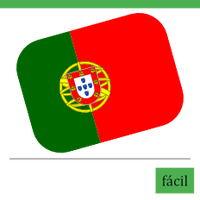Verão
Sommer
Summer
Verano
L'été
Estate
夏
Sommar
Літо
夏天
夏天
O verão é uma das quatro estações do ano , caracterizada por ser a estação mais quente.
||||||saisons|||caractérisée||||||
Der Sommer ist eine der vier Jahreszeiten und zeichnet sich dadurch aus, dass er die heißeste Jahreszeit ist.
Summer is one of the four seasons of the year, characterized by being the hottest season.
Літо — одна з чотирьох пір року, яка характеризується найжаркішою порою року.
夏季是一年四季之一,也是最热的季节。
Neste período, as temperaturas permanecem elevadas e os dias são mais longos do que os dias de outras estações.
|période||températures|restent|élevées|||||||||||||
In dieser Zeit bleiben die Temperaturen hoch und die Tage sind länger als in anderen Jahreszeiten.
During this period, temperatures remain high and the days are longer than those of other seasons.
В этот период температура остается высокой, а дни длиннее, чем в другие сезоны.
У цей період температура залишається високою, а дні довшими, ніж в інші пори року.
在此期间,气温持续较高,白天也比其他季节更长。
Geralmente, o verão é também o período do ano reservado às férias.
|||||||||réservé à||
Der Sommer ist im Allgemeinen auch die Zeit der Ferien.
Generally, summer is also the period of the year reserved for vacations.
Взагалі, літо – це також період року, призначений для відпусток.
一般来说,夏季也是一年中留给假期的时间。
O verão do hemisfério norte é chamado de "verão boreal", e o do hemisfério sul é chamado de "verão austral".
|||hémisphère||||||boréal||||||||||austral
Der Sommer auf der Nordhalbkugel wird als "borealer Sommer" bezeichnet, der Sommer auf der Südhalbkugel als "australischer Sommer".
The summer in the northern hemisphere is called "boreal summer", and the one in the southern hemisphere is called "austral summer".
Лето в северном полушарии называется "бореальным летом", а лето в южном полушарии - "австральным летом".
Літо в північній півкулі називають «бореальним літом», а в південній — «австралійським».
北半球的夏季称为“北半球夏季”,南半球的夏季称为“南夏”。
O "verão boreal" tem início com o solstício de verão do hemisfério norte, que acontece cerca de 21 de junho, e termina com o equinócio de outono nesse mesmo hemisfério, por volta de 23 de setembro.
|||||||solstice d'été||||||||||||||||équinoxe d'automne||||||||||
Der "boreale Sommer" beginnt mit der Sommersonnenwende auf der Nordhalbkugel, die um den 21. Juni stattfindet, und endet mit der Herbsttagundnachtgleiche auf derselben Hemisphäre um den 23. September.
"Boreal summer" begins with the northern hemisphere's summer solstice, which happens around June 21, and ends with the autumnal equinox in that same hemisphere, around September 23.
Бореальное лето" начинается с летнего солнцестояния в северном полушарии, которое происходит около 21 июня, и заканчивается осенним равноденствием в том же полушарии, около 23 сентября.
«Бореальне літо» починається з літнього сонцестояння північної півкулі, яке відбувається приблизно 21 червня, і закінчується осіннім рівноденням у тій самій півкулі, приблизно 23 вересня.
“北半球夏季”始于北半球的夏至(6 月 21 日左右),结束于同一半球的秋分(9 月 23 日左右)。
O "verão austral" tem início com o solstício de verão do hemisfério sul, que acontece cerca de 21 de dezembro, e finda com o equinócio de outono, por volta de 20 de março nesse mesmo hemisfério.
||||||||||||||||||||se termine|||||||||||||
Der "australische Sommer" beginnt mit der Sommersonnenwende auf der Südhalbkugel um den 21. Dezember und endet mit der Herbsttagundnachtgleiche um den 20. März auf derselben Hemisphäre.
The "austral summer" begins with the summer solstice in the southern hemisphere, which happens around December 21, and ends with the autumnal equinox, around March 20 in that same hemisphere.
Австралийское лето" начинается с летнего солнцестояния в южном полушарии, около 21 декабря, и заканчивается осенним равноденствием, около 20 марта в том же полушарии.
«Австралійне літо» починається з літнього сонцестояння в південній півкулі, яке відбувається приблизно 21 грудня, і закінчується осіннім рівноденням, приблизно 20 березня в тій самій півкулі.
“南半球的夏季”始于南半球的夏至,即12月21日左右,结束于南半球的秋分,即3月20日左右。
Nos tempos primitivos , era comum dividir o ano em cinco estações, sendo o verão dividido em duas partes: o verão propriamente dito, de tempo quente e chuvoso, e o estio, de tempo quente e seco, palavra da qual deriva o termo "estiagem".
|temps|primitifs|||||||||étant donné que|||||||||à proprement parler||||||pluvieux|||saison sèche|||||sec||||dérive de||terme "sécheresse"|saison sèche
In primitiven Zeiten war es üblich, das Jahr in fünf Jahreszeiten einzuteilen, wobei der Sommer in zwei Teile unterteilt wurde: den eigentlichen Sommer mit heißem, regnerischem Wetter und den Sommer mit heißem, trockenem Wetter, wovon sich der Begriff "estiagem" ableitet.
In primitive times, it was common to divide the year into five seasons, with summer divided into two parts: the summer itself, with hot and rainy weather, and the summer, with hot and dry weather, a word from which the term "drought" derives. ".
В первобытные времена было принято делить год на пять сезонов, причем лето делилось на две части: собственно лето, с жаркой, дождливой погодой, и лето, с жаркой, сухой погодой - слово, от которого происходит термин "estiagem".
У первісні часи було прийнято ділити рік на п'ять пір року, причому літо поділялося на дві частини: саме літо, з спекотною і дощовою погодою, і літо, з спекотною і сухою погодою, слово, від якого походить термін «посуха». "походить. ".
原始时代,人们普遍将一年分为五季,夏季分为两部分:天气炎热多雨的夏季和天气炎热干燥的夏季,“旱”一词就是由此而来。 “衍生”。
Atualmente, usa-se o termo "estio" para um período de seca e também como um sinónimo para verão.
|||||||||||||||synonyme de été||
Heutzutage wird der Begriff "estio" für eine Dürreperiode und auch als Synonym für den Sommer verwendet.
Currently, the term "estio" is used for a period of drought and also as a synonym for summer.
В настоящее время термин "estio" используется для обозначения периода засухи, а также как синоним лета.
В даний час термін «estio» використовується для періоду посухи, а також як синонім літа.

